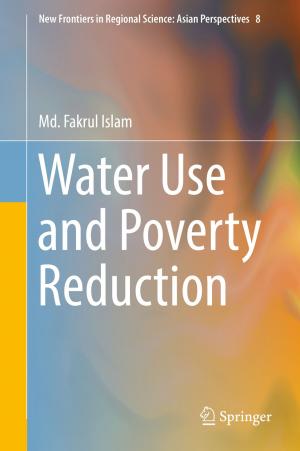Co-benefits of Sustainable Forestry
Ecological Studies of a Certified Bornean Rain Forest
Nonfiction, Science & Nature, Science, Biological Sciences, Ecology, Technology, Agriculture & Animal Husbandry| Author: | ISBN: | 9784431541417 | |
| Publisher: | Springer Japan | Publication: | September 24, 2012 |
| Imprint: | Springer | Language: | English |
| Author: | |
| ISBN: | 9784431541417 |
| Publisher: | Springer Japan |
| Publication: | September 24, 2012 |
| Imprint: | Springer |
| Language: | English |
Tropical rain forests are increasingly expected to serve for climate change mitigation and biodiversity conservation amid global climate change and increasing human demands for land. Natural production forests that are legally designated to produce timber occur widely in the Southeast Asian tropics. Synergizing timber production, climate change mitigation and biodiversity conservation in such tropical production forests is one of the most realistic means to resolve these contemporary global problems. Next-generation sustainable forest management is being practiced in the natural tropical rain forest of a model site in Sabah, Malaysian Borneo, while earlier sustainable management practices have generally failed, leading to extensive deforestation and forest degradation elsewhere in the tropics. Ecologists have examined co-benefits of sustainable forestry in the model forest in terms of forest regeneration, carbon sequestration and biodiversity in comparison to a forest managed by destructive conventional methods. Taxonomic groups studied have included trees, decomposers, soil microbes, insects and mammals. A wide array of field methods and technology has been used including count plots, sensor cameras, and satellite remote-sensing. This book is a compilation of the results of those thorough ecological investigations and elucidates ecological processes of tropical rain forests after logging. The book furnishes useful information for foresters and conservation NGOs, and it also provides baseline information for biologists and ecologists. A further aim is to examine the environmental effects of a forest certification scheme as the model forest has been certified by the Forest Stewardship Council. Taken as a whole, this book proves that the desired synergy is possible.
Tropical rain forests are increasingly expected to serve for climate change mitigation and biodiversity conservation amid global climate change and increasing human demands for land. Natural production forests that are legally designated to produce timber occur widely in the Southeast Asian tropics. Synergizing timber production, climate change mitigation and biodiversity conservation in such tropical production forests is one of the most realistic means to resolve these contemporary global problems. Next-generation sustainable forest management is being practiced in the natural tropical rain forest of a model site in Sabah, Malaysian Borneo, while earlier sustainable management practices have generally failed, leading to extensive deforestation and forest degradation elsewhere in the tropics. Ecologists have examined co-benefits of sustainable forestry in the model forest in terms of forest regeneration, carbon sequestration and biodiversity in comparison to a forest managed by destructive conventional methods. Taxonomic groups studied have included trees, decomposers, soil microbes, insects and mammals. A wide array of field methods and technology has been used including count plots, sensor cameras, and satellite remote-sensing. This book is a compilation of the results of those thorough ecological investigations and elucidates ecological processes of tropical rain forests after logging. The book furnishes useful information for foresters and conservation NGOs, and it also provides baseline information for biologists and ecologists. A further aim is to examine the environmental effects of a forest certification scheme as the model forest has been certified by the Forest Stewardship Council. Taken as a whole, this book proves that the desired synergy is possible.















